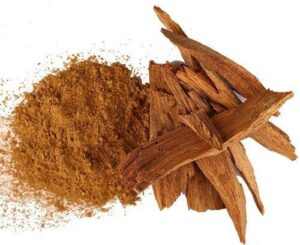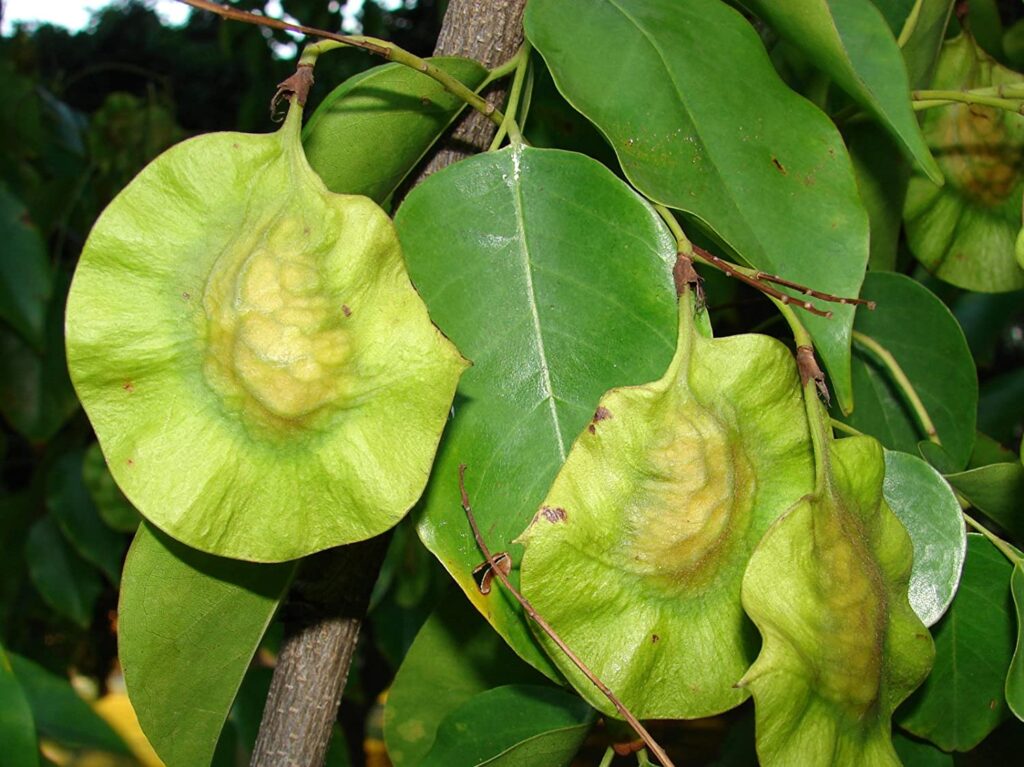Herb
Asana (Pterocarpus marsupium) Herb Ayurvedic Overview
Asana (Pterocarpus marsupium) or Vijayasara consists of the heart-wood of Pterocarpus marsupium Roxb (Fam. Leguminosae), which is extensively used to manage diarrhea, obesity, skin problems, and other lifestyle disorders. It is a deciduous, moderate to large sized tree; circumference is up to 30 m high and 2.5 m with straight clear bole. Asana (Pterocarpus marsupium) is found mainly throughout Gujarat, Madhya Pradesh, Bihar, and Orissa. The trunk of Vijayasara is smoky having vertical slits in it and a red color gum is produced by it. The leaves bears wavy margins and it bears yellowish flowers.
The tree have many therapeutic applications and consist of many properties like Astringent , Anti-inflammatory, Antibacterial, Blood purifier, Antioxidants, Anthelmintic, Antipyretic, Spasmodic actions etc.The aqueous extract of the heartwood have anti-diabetic and cardio tonic activities. The heart-wood of Asana (Pterocarpus marsupium) is useful in abscesses, boils, ulcers, scabies, skin diseases, diabetes, anaemia, bleeding and diarrhoea, eczema, psoriasis, dysentery, intestinal worms, urinary problems, excess of kapha and obesity.
Table of Contents
Scientific Classification of Asana (Pterocarpus marsupium):
- Kingdom: Plantae
- Order: Fabales
- Family: Fabaceae
- Subfamily: Faboideae
- Tribe: Dalbergieae
- Genus: Pterocarpus
Asana (Pterocarpus marsupium) Synonyms:
- Sanskrit: Bijaka, Asanaka, Bijasara, Pitasara
- Assamese: Aajar
- Bengali: Piyasala, Pitasala
- English: Indian Kino Tree
- Gujrati: Biyo
- Hindi: Vijayasara, Bija
- Kannada: Bijasara, Asana
- Kashmiri: Lal Chandeur
- Malayalam: Venga
- Marathi: Bibala
- Oriya: Piashala
- Punjabi: Chandan Lal, Channanlal
- Tamil: Vengai
- Telugu: Yegi, Vegisa
- Urdu: Bijasar
Asana (Pterocarpus marsupium) Description:
 a) Macroscopic: Asana (Pterocarpus marsupium) occurs as irregular pieces in variable size and thickness, having golden yellowish-brown with darker streaks. On soaking in water, it gives a yellow color solution with blue fluorescence. It is vital, tough, rugged, moderately heavy, and difficult to break but brittle, taste, astringent.
a) Macroscopic: Asana (Pterocarpus marsupium) occurs as irregular pieces in variable size and thickness, having golden yellowish-brown with darker streaks. On soaking in water, it gives a yellow color solution with blue fluorescence. It is vital, tough, rugged, moderately heavy, and difficult to break but brittle, taste, astringent.
b) Microscopic: The transverse section of Asana shows alternating bands of smaller and larger polygonal cells consisting of fiber, tracheids, xylem parenchyma, and xylem rays transverse it. The numerous xylem vessels are distributed throughout. In singles or groups of 2-3, it shows tyloses filled with tannin, in isolated preparations, vessels, drum or barrel-shaped with well-marked perforation rims and bordered pits, tracheids numerous, long, thick-walled with tapering ends and simple pits, fiber tracheids elongated, thick-walled with a narrow lumen and simple holes, xylem parenchyma rectangular with simple pits, paratracheal, 15 surrounding vessels, xylem rays uni-to-biseriate, 3-5-7 cells high, prismatic crystals of calcium oxalate present in crystal fibers, starch absent.
Powder: It is brown to a chocolate color. Under a microscope, it shows vessels with bordered pits. The fiber of Asana (Pterocarpus marsupium) is tracheids, fragments of xylem rays and few crystal fibers, starch absent.
Identity, Purity, and Strength of Asana (Pterocarpus marsupium):
- Foreign matter Not more than 2 percent, Appendix 2.2.2
- Total Ash Not more than 2 percent, Appendix 2.2.3
- Acid-insoluble ash Not more than 0.5 percent, Appendix 2.2.4
- Alcohol-soluble extractive Not less than 7 percent, Appendix 2.2.6
- Water-soluble extractive Not less than 5 percent, Appendix 2.2.7
Chemical Constituents of Asana (Pterocarpus marsupium):
The main constituents of Asana are Alkaloids and resin. Other than this, it contains phyto constituents like Kinotannic acid, Kino red, Kino pyrocatechin, gallic acid. Also the plant is rich in pstilbene, pterostilbene, catechin, epicatechin, pseudobaptigenin, isoliquiritigenin, dihydrochalcone, propterol, pterosupin, marsupsin, marsupol, marsupinol and pterocarpols A and B, pyro catechin and epicatechin.
Ayurvedic Properties and Action of Asana (Pterocarpus marsupium):
- Rasa: Katu, Tikta, Kasahaya
- Guna: Laghu, Ruksha
- Virya: Ushna
- Vipaka: Katu
- Karma: Kushtaghana, Rasayana, Kaphapittashamak, Galadoshaghan, Keshya, Stambhan, Raktashodhan.
Ayurvedic Formulation made by Asana (Pterocarpus marsupium):
The Ayurvedic Formulations of Asana are Nyagrodhadi Churna, Asanavilvadi Taila, Asana Eladi Taila, Asana Manjisthadi Taila.
Therapeutic Uses of Asana (Pterocarpus marsupium):
Asana (Pterocarpus marsupium) can be used in: Krimiroga, Kushtha, Prameha, Pandu, Medodosha, Gala dosha, Vranahara, Arshoghana, Jwaraghan, Shoph hara.
Dose of Asana (Pterocarpus marsupium):
50-100 ml of the drug for decoction.
3-5 gm of powder.
Reference:
Ayurvedic Pharmacopeia of India.


